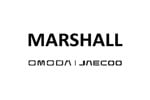What you need is quality control. There are three kinds – basic 'quality control' (QC), 'quality assurance' (QA), and 'continuous quality improvement' (CQI).
For basic quality control, you establish the range of acceptable quality and then inspect finished work to see if it falls within limits. For many jobs in aftersales, acceptable quality will probably hinge on whether anything was missed. One hundred per cent inspection is impossible and too costly, but you can check a small percentage of jobs to keep everyone on their toes.
Quality assurance focuses on specific indicators of quality. As such, QA is more about measuring work processes and outcomes, not physical inspection. The best example of a QA indicator is the percentage of technicians' time expended on 'come-backs'. This is known as 'rectification of faulty work' and the benchmark is two percent. Two other commonly used measures are the number of complaints received and vehicle manufacturers' CSI.
Due to the complex nature of aftersales work, QC or QA are not really sufficient to identify and fix quality problems. Continuous quality improvement is the answer. CQI examines the entire repair method by linking the structure, process and customer outcome from the initial booking to payment and collection. It recognises that everyone in the aftersales team influences quality – not just the technicians. Importantly, CQI assumes that most quality failures are the result of faulty processes and not faulty people.
CQI is circular and starts by identifying a problem and prioritising importance. The next steps are to find the cause and decide on a course of action. The method then comes full circle back to monitoring and feedback. Taking MoT testing as an example, CQI might work like this. You carry out a spot check and find that your tester is missing some faults. This is a high priority problem and demands a quick solution. You investigate the cause and find the tester is your most able technician, and he is less than thorough because of time pressures. He has a high workload and MoT booking times often take him off his other jobs. You resolve to reduce his workload and control MoT booking times by involving service reception. Once implemented, you monitor the effectiveness of the solution.
Of course, we have only scratched the surface of quality control here. Just make sure you are doing more than scratching the surface.













Login to comment
Comments
No comments have been made yet.